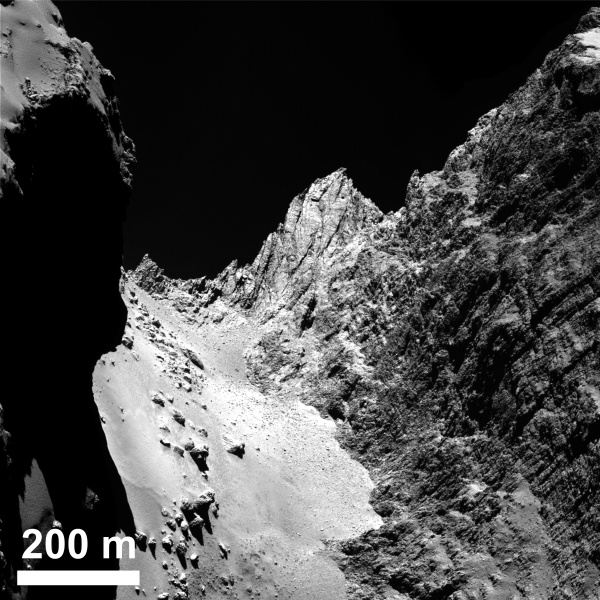
Many of the images we have been seeing of Rosetta’s comet – 67P/Churyumov-Gerasimenko, or 67P for short – have been captured with the spacecraft’s NavCam instrument. And while they have been amazingly beautiful in their own right, NavCam isn’t Rosetta’s best camera; that distinction goes to OSIRIS, the Optical, Spectroscopic, and Infrared Remote Imaging System experiment that captures both wide- and narrow-angle high resolution images for scientific study.
Now OSIRIS images of 67P have been few and far between since Rosetta arrived, mostly because the instrument is not run by ESA but rather by the Max Planck Institute for Solar System Research in Germany and a rather large international consortium of research groups, and they have first access to the data and decide when images will become publicly available. While it’s very common in space science to allow time for researchers to work privately with their own data for a period of time before it gets spread around, it can be frustrating for those who know there are fantastic images waiting to be seen (of, say, the surface of a comet) that are just out of reach!
So today the OSIRIS team threw us all a few bones, images that show the surface of 67P in stunning detail that the hardworking but lower-resolution NavCam could never deliver. Above is one, and there are even more below – check ’em out!
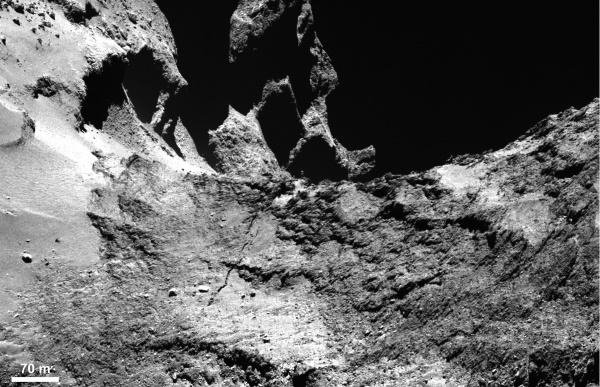
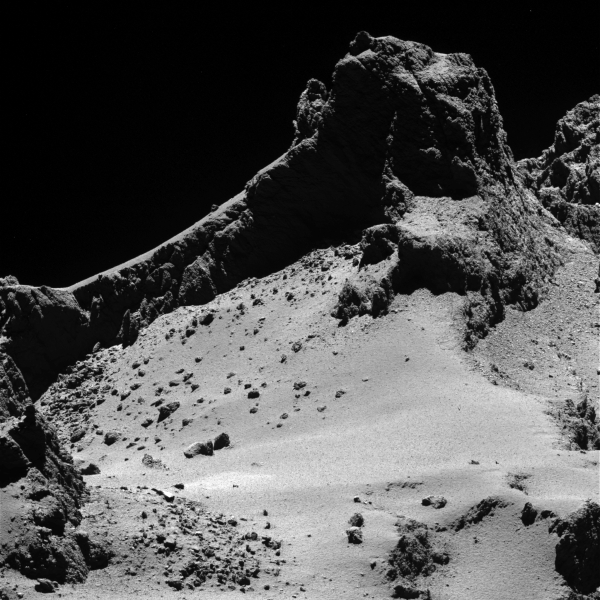
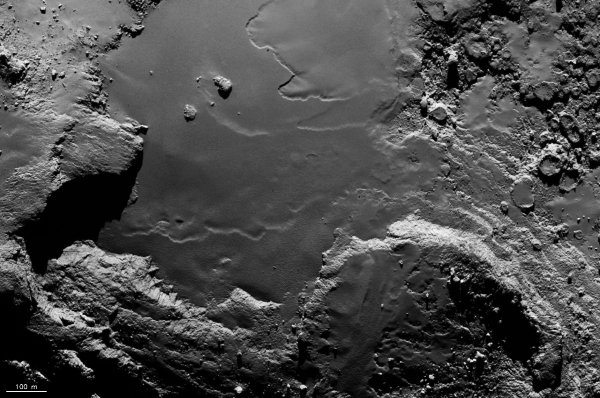
(Hard to believe you’re looking at a comet, isn’t it? This might help remind you…)
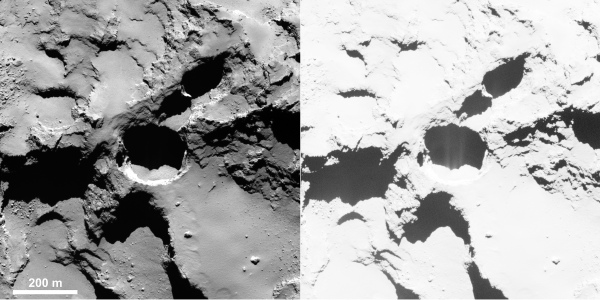
And if you had any doubt that this was indeed an alien world, OSIRIS has found some weird textures on the sides of slops and craters they are nicknaming “goosebumps.” The cause of their formation is not yet known.
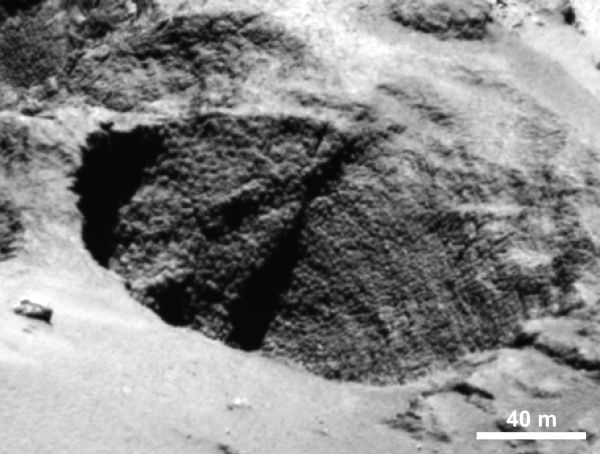
Want an idea of the color variation on 67P? Check this one out:
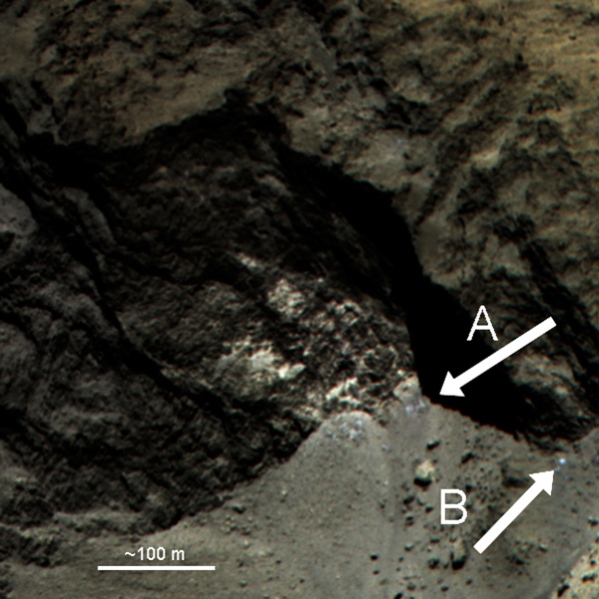
And if you’re wondering about all the Egyptian names, it’s been decided that regions and features on 67P will be named after ancient Egyptian people and places, following the lead of Rosetta and Philae. See a map below of the regions of the comet:

In addition we now have some vital stats on the comet, including its size, density, porosity, rotation, and others.
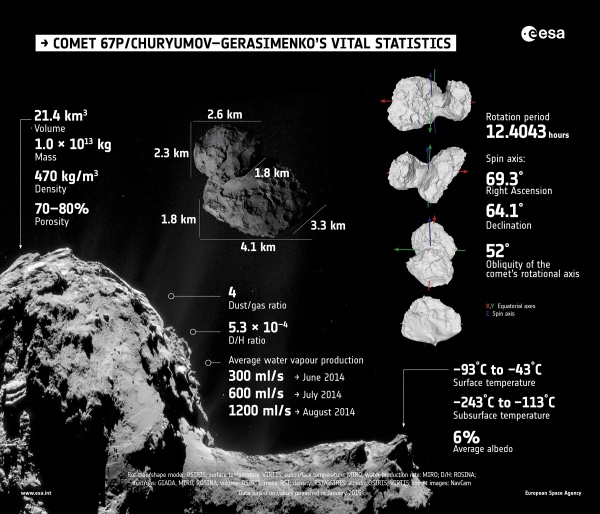
Some of the key facts of comet 67P’s characteristics include:
• The small lobe measures 2.6 × 2.3 × 1.8 km (1.6 x 1.4 x 1.1 miles)
• The large lobe measures 4.1 × 3.3 × 1.8 km (2.5 x 2.0 x 1.1 miles)
• The total volume of the comet is 21.4 km3 (5.13 cubic miles)
• Its mass is 10 billion tons with a density of 470 kg/m3
• The comet has a very high porosity of 70–80% with the interior structure likely comprising weakly bonded ice-dust clumps with small void spaces between them.
• The dusty covering of the comet may be several meters thick in places.
Read about these latest findings on the ESA site here.
“We have already learned a lot in the few months we have been alongside the comet, but as more and more data are collected and analyzed from this close study of the comet we hope to answer many key questions about its origin and evolution.”
– Matt Taylor, ESA’s Rosetta project scientist
Want to see even more? (And yes, there’s more.) Visit ESA’s Space in Images page.
Source: ESA
You could label some of these images as black and white pictures of a plain in Arizona and nobody would know the difference. It’s fascinating how similar they are to places on earth.
LikeLike
Reblogged this on secrectwordisblue.
LikeLike
It’s hard to believe that these are images of a comet and not desert hills here on Earth. I’m going to have some fun trying to re-create these images as 3D landscapes with Bryce and Vue on my computer.
Best Regards,
Eric
LikeLike
OSIRIS Rules !!!!
LikeLike
Reblogged this on Reasonable Rants.
LikeLike
Awesome photos !!
Jeff Barani from Vence (France)
LikeLike
I knew the harpoon would be a problem, I’ve spent a lot of time in the field and in the workshop/lab with stone and the reliability of modern drilling and metal for stone tools is a random challenge at best… ESA Germany, wrong standard, German tools usually well interested, English treatment still isn’t good enough for them, and they still represent their best work… Glue resin ?
LikeLike